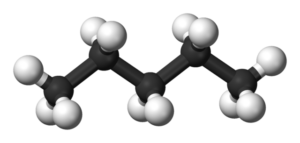Playlist
Show Playlist
Hide Playlist
Alkanes and Alkenes: Introduction
-
Slides Alkanes and Alkenes.pdf
-
Download Lecture Overview
00:02 Right. Now, we are into Module III where we start looking at Organic Chemistry. 00:07 And so, I would like to introduce you to some of the basic functional groups that you will encounter over the course of this particular module. In this lecture, we are going to be looking at alkenes and alkynes. And here’s a bit of nomenclature revision for you dealing with alkenes in particular. If a compound contains a double bond, such as those shown here on the board, the name of it is given by the suffix “ene”. A number prefix is used to denote the position of this unsaturation. And indeed, whenever you see an alkane molecule with a double bond in it, it automatically becomes an alkene and is considered, therefore, unsaturated. Alkanes are, by their very definition, saturated. 00:55 But, from a synthetic chemistry perspective, since all we tend to do with alkanes is set fire to them, it really isn’t that important that we cover them as part of this module. 01:04 So, for example, if we look at the compound… the first compound with the terminal alkene i.e. the double bond in the terminal position, we can see that that is called 1-butene. This is because we have a double bond and it is in the first position. Where we have an internal alkene, such as that shown in the middle, we call that a 2-butene. And where we have a multiple double bonds, such as in the case of our ‘diene’ compound, we would refer to it as,, in this case as a 1,3-butadiene. Note, the origins of the ‘but’ part comes from the fact that it is four carbon atoms in length. And if you recall, the way it goes is methyl, ethyl, propyl, butyl, pentyl, hexyl, heptyl and octyl, as we go up from the number of carbons 1 through 8. Okay. So, that’s just a bit of nomenclature revision. The question is what do we use them for? What do we do? Well, typically alkenes, in laboratories, undergo Electrophilic Addition reactions. Addition reactions are characterised in the example… example equation showed above where we have a double bonded carbon to carbon and we have the addition of our component X and Z over that double bond. 02:38 Let’s take a real world example which is the addition of a hydrogen halide over an alkene double bond. And this is where we introduce the concept of nucleophile and electrophile. 02:51 An electrophile is something which has an affinity for electrons and a nucleophile is something that has an affinity for nucleophiles, which is positive. If we look, for example, at the double bond of our alkene and we see that the pi bond serves as a nucleophile, it will try to attack, or rather try to transfer its electrons to something which is partially positively charged. If you go back as far as Module I where we looked at dipoles such as that with hydrogen bromide or hydrobromic acid, you see we have a partial positive charge on a hydrobromic acid given as delta+ and a partial negative charge on our bromide given as delta-. What happens, in this case, is that electrons attack the hydrogen and generate a carbocation intermediate, which is shown as the middle structure. That, then, reacts with our now negatively charged bromide and what you’ve done is add hydrogen bromide over the double bond. So, let’s actually look at that in a bit more detail.
About the Lecture
The lecture Alkanes and Alkenes: Introduction by Adam Le Gresley, PhD is from the course Organic Chemistry.
Included Quiz Questions
What is the nomenclature for a compound that contains a double bond?
- The name ends with "-ene"
- The name ends with "-ane"
- The name begins with "-ene"
- The name begins with "-ane"
- The name ends with "-ae"
Customer reviews
5,0 of 5 stars
| 5 Stars |
|
5 |
| 4 Stars |
|
0 |
| 3 Stars |
|
0 |
| 2 Stars |
|
0 |
| 1 Star |
|
0 |




